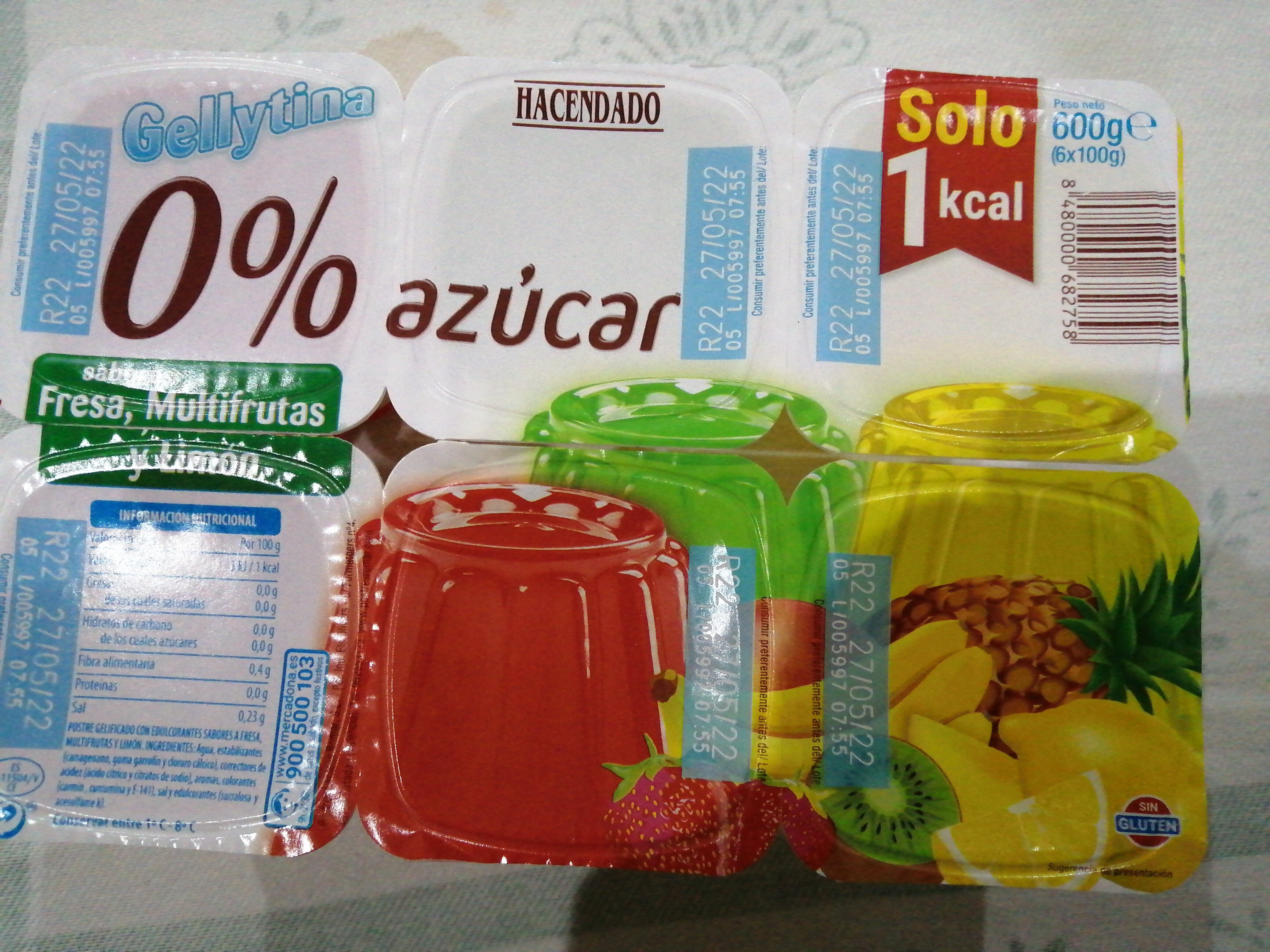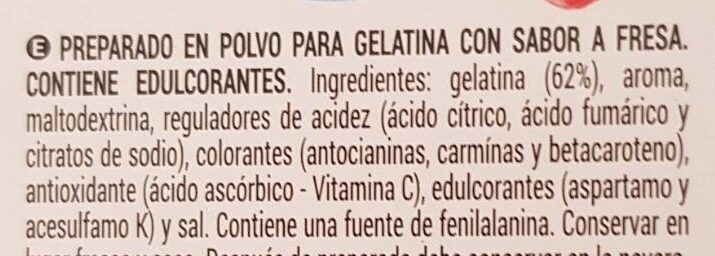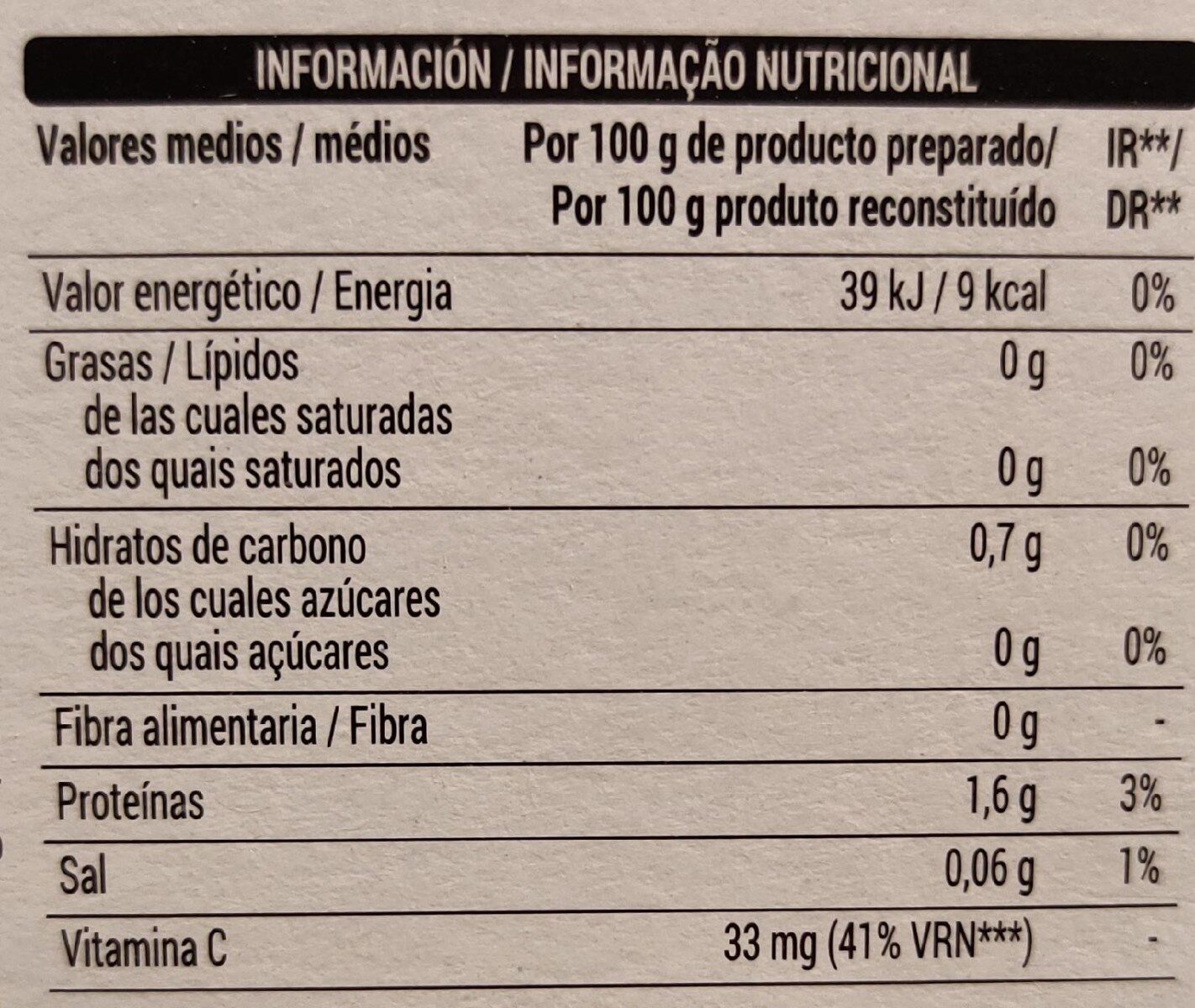Gelatina fresa 0% azúcares - Hacendado - 600g
This product page is not complete. You can help to complete it by editing it and adding more data from the photos we have, or by taking more photos using the app for Android or iPhone/iPad. Thank you!
×
Barcode: 8480000323675 (EAN / EAN-13)
Quantity: 600g
Packaging: Plastic
Brands: Hacendado
Categories: Desserts, Cooking helpers, Dessert mixes, Jelly desserts, Mixes for jelly desserts
Labels, certifications, awards:
No gluten, Contains a source of phenylalanine, Green Dot
Countries where sold: Spain
Matching with your preferences
Environment
Packaging
Transportation
Report a problem
Data sources
Product added on by elcoco
Last edit of product page on by mariacastiel.
Product page also edited by elcoco.3d6add86daf95e7eecb77b9d873966e1, hungergames, inf, kiliweb, macruz, mainluk, moon-rabbit, musarana, roboto-app, yuka.PLJ_M-6rGv09J9_K25lk-Sq8GsHbJNJaOnchog, yuka.V293d0ZvTUNwdGNCbzhZenAwN0h5dU1wN0tHUkRIMlZPZk5CSUE9PQ.









